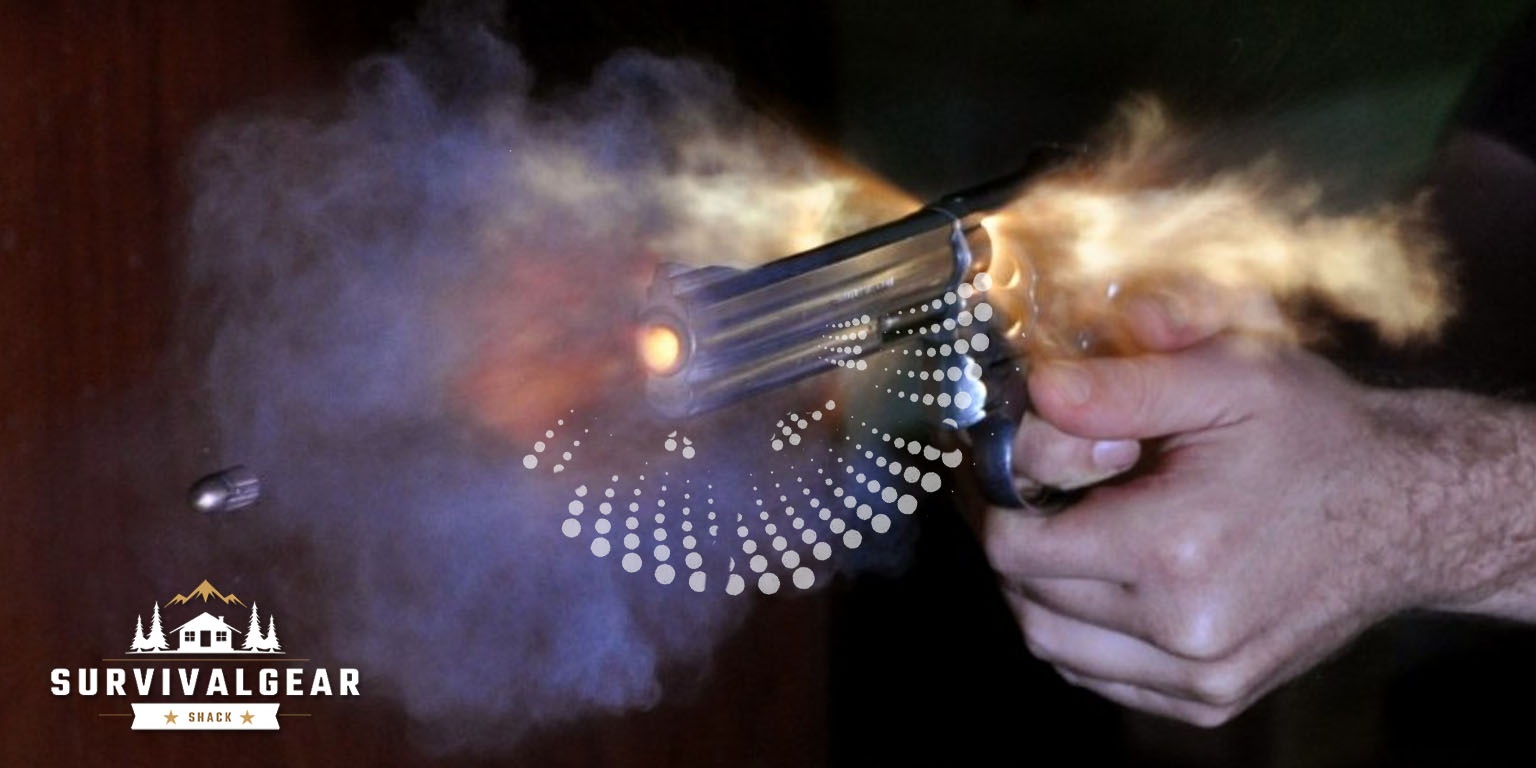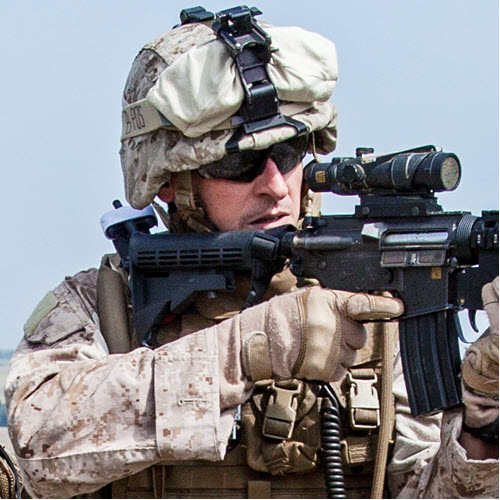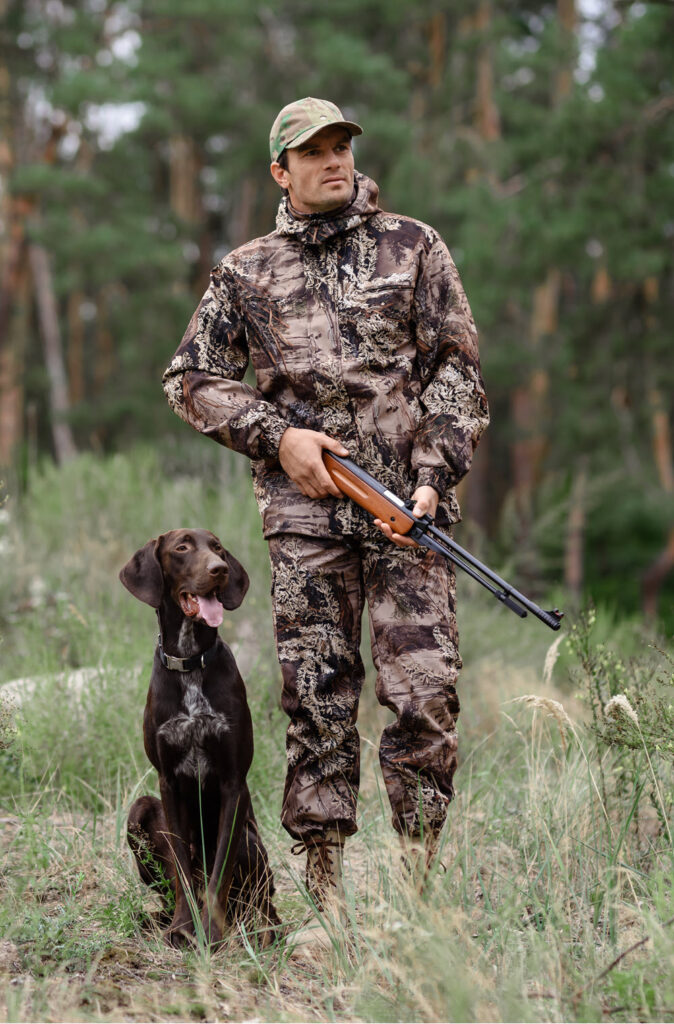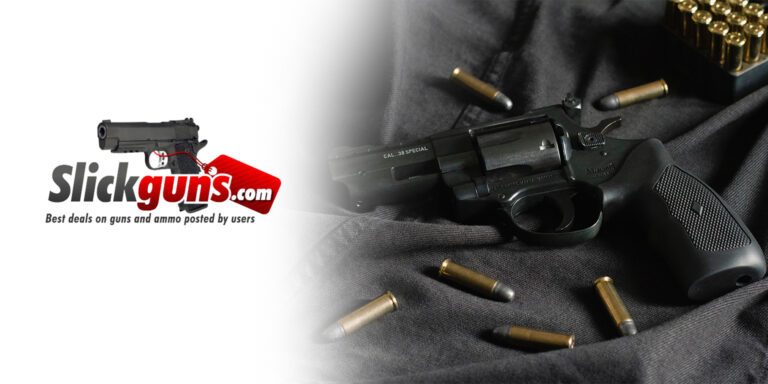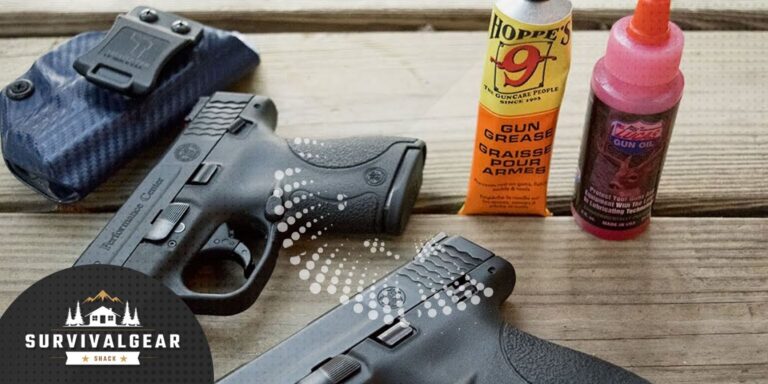Truly, gunshot residue (GSR) is a known term in the gun shooting world. In fact, it comes with other popular names, such as gunfire residue, firearm discharge residue, and cartridge discharge residue. As the name implies, you can accumulate gunshot residue when you shoot your gun. With that being said, it is not only your gun that you need to clean. However, the concern now is can gunshot residue be washed off?
Whether after a short or long time shooting in the range, you also need to clean yourself to avoid possible health consequences. That’s why when you know that you have a long time of close contact with your gun, you need to practice stricter excellent hygiene. As a gun owner, your responsibility doesn’t end by cleaning your gun with a bore snake or gun cleaning kit.
Of course, there are necessary things to keep in mind to maintain an impressive overall gun use and safety. With that being said, the question is, how many gun owners don’t forget to wash their hands immediately after their shooting adventure, given the fact that they can quickly spread gunshot residue.
In any case, some gun owners wear shooting gloves. Yet, it doesn’t mean that they are free not to wash their hands immediately. Basically, once you shoot your gun, there’s already left gunshot residue on your hands and/or shooting gloves. Sometimes, you can also have gunshot residue on your clothes.
Without taking any actions about the gunshot residue, you can eventually transfer it to other people and places. What a total disaster in the making. Therefore, to know more about gunshot residue to answer the question can gunshot residue be washed off, let’s find out by exploring the relevant info below, starting with deeper details about what is gunshot residue.
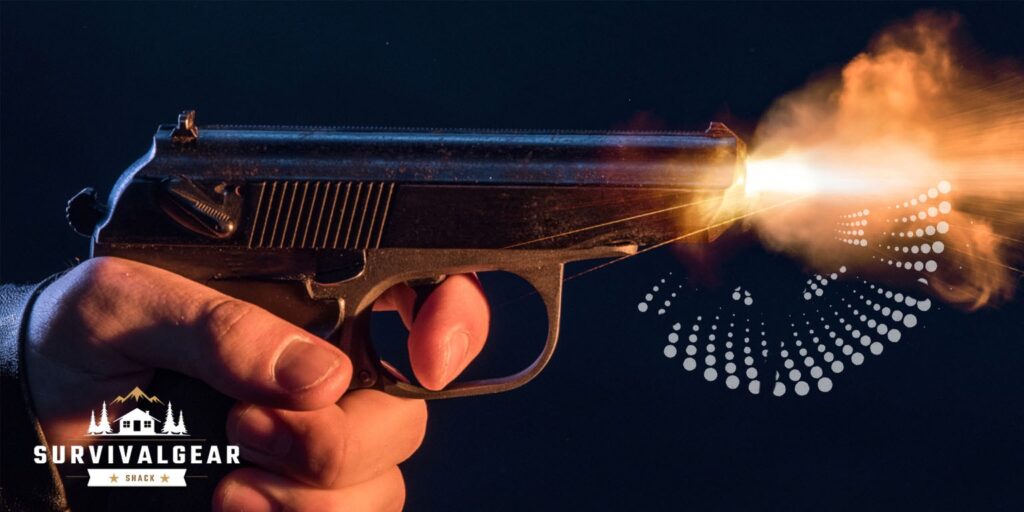
What is Gunshot Residue?
Gunshot residue is the gunpowder remnants left after the gun is discharged. Interestingly, it is not just the shooters that can accumulate gunshot residue on their hands and clothes. Here are some scenarios when a person can have gunshot residue:
- Shot a gun.
Of course, it is self-explanatory how a shooter surely has gunshot residue, right? As the one who instigates that shooting and the closest person near the gun, it is impossible that the shooter doesn’t have a gun residue while others have it.
- Standing near the area where a shooter fired a shot.
By merely standing near the area, you can also acquire gunshot residue, especially at shooting ranges where many shooters are gathered.
- Touching a recently used gun.
Aside from a person, there is also visible gunshot residue left on the gun used. With that being said, if you touch a recently fired gun, you can have a residue in your hand. Basically, you need to wash your hands immediately to maintain hygiene safety.
- Touching thing that a shooter recently touched with a gunshot residue in hand.
The scenario describes the consequence of not taking immediate action to clean shotgun residue. It means that the shooter already contaminated other things by not washing hands. Truly, it is not a great example of a responsible gun owner. Thus, neglect of hygiene safety must not be practiced by other gun owners.
Moreover, gunshot residue build-up can also be in the gun bore. However, the residue must not be in there for a long time as it is considered a threat. Otherwise, the cartridge discharge residue can decrease the accuracy of the gun. Aside from the effect on accuracy, it is not also safe to use a gun full of gunshot residue because it tends to malfunction, which can highly compromise safety. That’s why it is important to own the best gun cleaning kits that can maintain the gun’s top working condition and performance.
Going back to the gunshot residue, it is the result when the produced particles of a gun have cooled and condensed. The more intense the shooting is, the more residue the gun will leave on the shooter and others. In fact, the shooting-produced particles can even go to the far distance where that target is. Of course, the bystanders are not safe in accumulating gunshot residue if they are too near.
Generally, gunshot residue consists of combined unburnt and burnt particles coming from gunpowder/propellant, vaporized lead, and explosive primer. Thus, getting rid of it is necessarily important. After all, no one wants to suffer from the health-damaging effect, right? With that in mind, continue reading to discover other vital things related to gunshot residue, primarily what happens when a gun is discharged. Find out by exploring more.
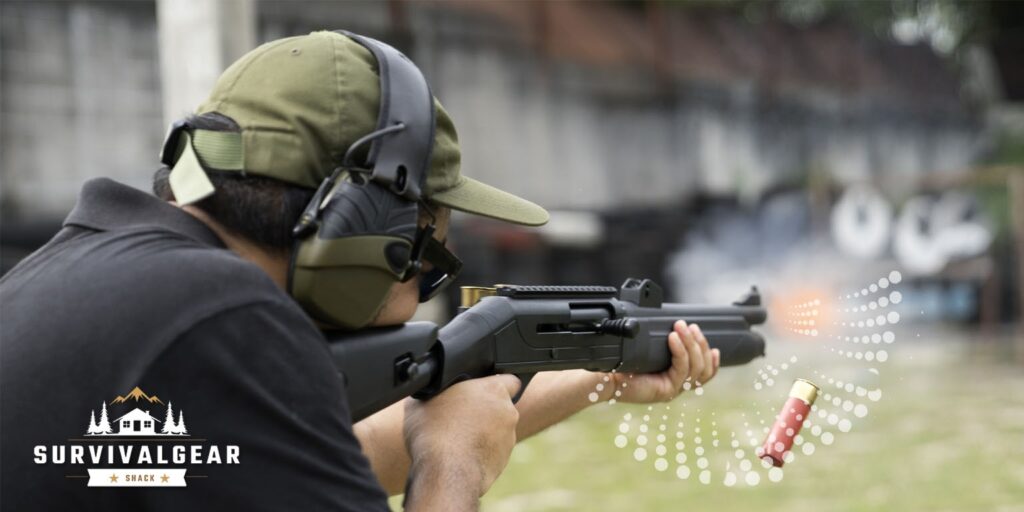
What Happens When a Gun is Discharged
Inevitably, when discussing the gunshot residues and the particles that come with it, starting with the basics is the right thing to do. With that being said, let’s go back and explore the process of firing a gun. Of course, if you are going to the shooting range regularly, understanding all the mechanics involved when a gun is discharged is necessary for gun safety, right? So, let’s get into it.
As mentioned above, what visible or microscopic particles when a gun is discharged or a firearm is shot is popularly termed as gunshot or firearm residue. Several things simultaneously happen when you fire a gun; part of the process in play is the build-up of particles that make a gunshot residue left behind on the gun bore and shooter.
In addition, when the trigger of any gun is pulled back by the shooter, it is then that the firing pin hits the primer cap. As a result of the process, there will be a minimal and highly controlled explosion and flame. With the explosion arises a new journey for the resulting flame. The flame is successful if it passes through the anvil holes in the primer. After that, the flame can ignite the propellant that is designed inside the cartridge case.
When the propellant is efficiently ignited, it is only then that the temperature of the gun will start to rise. The gun’s temperature is then causing a powerful pressure reaction. With that amount of pressure, the bullet is driven to propel out of the gun barrel at a fast pace. Of course, there’s something you must expect to acquire after seeing an expelled bullet; it is none other than gunshot residue.
See, the gasses also release residue that always goes together with an expelled bullet due to the impressively complete combustion process. Apart from your gun, you will also have residue on your clothes, face, hands, torso, and many more. Truly, the amount of residue depends on how intense your shooting is and the bullet and ammo used.
Despite not seeing the residue with the naked eyes, it doesn’t mean that there is no residue and there’s no threat. Nevertheless, the issue directed to the question of can gunshot residue can be washed off since it is not harmless. The residue is never harmless since several harmful particles are composed in a cartridge discharge residue. It all leads from the breakdown components of a gun, primarily lead.
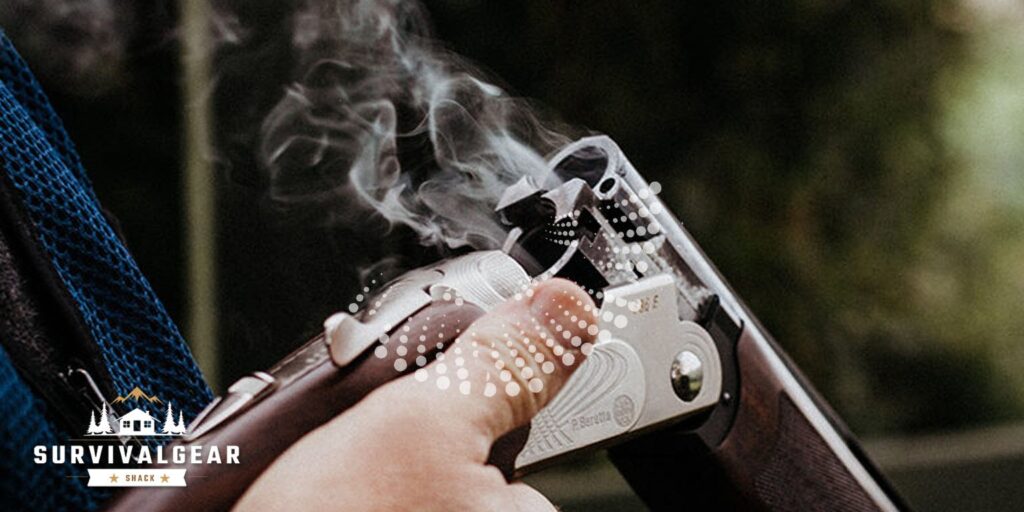
Since the particles are microscopic, the body is bound to absorb them quickly. One thing is for sure; it can lead to doom as it already spells danger for shooters. In some analyses about gunshot residue, there are four common compositions—first, the combination of calcium, silicon, and barium. There is also the combined residue of barium, antimony, lead. Meanwhile, there is also a single composition of antimony. Similar to the single residue composition of barium.
Besides that, it is important to state that most of the chemical compounds above have no positive effect being in prolonged contact with shooters. Thus, it explains the reason why cleaning gunshot residue from your skin and clothes is highly necessary after a trip to the shooting field.
Now, let’s discover the chemical compounds that gun components have. You’re lucky because you don’t have to worry about anything. In fact, to know them, just continue reading.
What Chemical Compounds That Gun Components Have?
In general, small gun cartridges are composed of gunpowder. In other terms, gunpowder is also functioning as a propellant or fuel. Along with the gunpowder are the primer, the cartridge case, and the bullet. At first, they might seem confusing about what role they play during a gun discharge. With that being said, you need to take a closer look at each gun component to understand them completely. Fortunately, you don’t have to feel stressed about it because you can learn them below.
The Primer Case & Primer
Typically, the gun’s primer case is generally constructed from zinc and copper. Both of the primer case components are detected in the primer case’s residue particles. In addition, since gun cartridges are designed differently, they feature different categories. More often, they are differentiated based on where the primer is located. Generally, they are termed as the centerfire and rimfire categories.
Moreover, the two categories feature their own uniquely different primer compounds that make them distinct from one another. For the centerfire primer types of gun cartridges, the make up of the category consists of three excellent primary gun chemical compounds. On the other hand, the rimfire types of gun cartridges, the make up depends entirely according to the manufacturer.
Going back to the centerfire primer types of gun cartridges, the three primary compounds composing them also produce forms of gunshot residues. With that being said, those compounds are identifiable. Here are the compounds associated with the centerfire primer cartridges, including the following components and compounds listed below:
- The initiator
The initiator component primarily consists of lead styphnate. A compound is widely used in small arms ammunition for commercial shooting applications and military. In addition, lead styphnate functions as the main explosive used in gun primers. The gun primer compound will ignite even with a simple impact. What can excellently ignite the lead styphnate is when the firing pin touches the primer cap. Thus, it explains why the compound was primarily used for the initiator for gun cartridges.
- The oxidizer
The oxidizer component basically contained a barium nitrate compound. In addition, the compound provides help for the oxidizer component to give off the oxygen required for the fuel-burning to effectively force out the bullet in the gun barrel to make an accurate and safe shot.
- The fuel
The fuel component of a gun’s centerfire primer typically comprises an antimony sulfide compound. As the name hints, the fuel component in primer outstandingly burns at a fast pace. With the quick action of the fuel component, it can effectively ignite gunpowder.
After igniting the gunpowder, the fuel then works to propel the bullet out of the gun’s barrel effectively. With that, the bullet can hit the target successfully. Of course, the shooting result differs depending on the skill of the shooter. With that being said, consistent practice is highly beneficial to reach outstanding shooting performance.
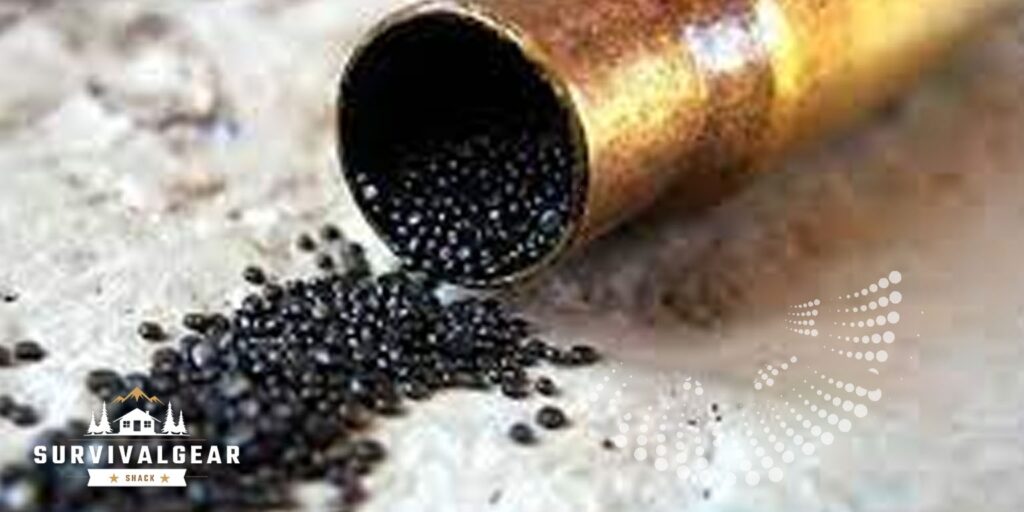
The Cartridge Case and Propellant
Similar to the primer case, the cartridge case is also typically constructed from copper and zinc. However, some cartridge cases are produced out of a nickel coating in some cases. In addition, modern-day gunpowder, also popularly termed smokeless powder, was incredibly invented in the late 17th century. Since then, smokeless powder has been favored by many gun owners over black powder because it produces less fouling and smoke. More importantly, the smokeless powder does not leave thick and heavy fouling in the gun barrel. With that being said, there will be less chance of rust built up.
Going back to history, the smokeless powder was first created by Paul Vielle in 1884, who is a French chemist. In fact, the common formulation of the powder is based on nitrocellulose. Meanwhile, Alfred Nobel also invented smokeless powder three years after Vielle; he named the powder Ballistite. For England in 1889, Hiram Maxim patented a similar powder and Hudson Maxim in the year 1890 for the United States. Interestingly, the creation of smokeless powder leads to the excellent development of modern semi- and fully automatic firearms.
Truly, the smokeless powder has a great reputation for being the safest and most powerful low-order explosive. With that being said, it is highly anticipated that it is highly suitable for use in ammunition. No doubt about its power because it has power like the black powder. Amazingly, it has an indefinite shelf life, given that it is properly stored.
The Bullet
Typically, bullets feature two major categories to their distinctive differences. In fact, they are grouped into two, which are lead and metal-jacketed bullets. By just looking at their names, there is already a hint about their differences. See, as the name implies, lead bullets are constructed from lead, and metal-jacketed bullets feature metal jackets.
Getting to know them better, lead bullets are also sometimes added with antimony by some manufacturers. The primary reason manufacturers add antimony is that the compound can provide additional strength to cause the lead bullets harder. In addition, some lead bullets are available with nickel, copper, or copper alloy coating.
Moreover, lead bullets are lubricated. As lead is a heavy and dense metal, it can deliver ideal momentum, velocity, and accuracy. By that, lead bullets are best-suited for delivering incredible upset at long-range shooting. At the same time, this category of bullet features a gas check. It is a hard metal cup that can effectively control the lead build-up and adds to the effective improvement of the gun’s accuracy simultaneously.
On the other hand, metal-jacketed bullets are generally made from two popular components: copper or brass. At the same time, bullets with metal jackets are also constructed with either a lead or steel core. Aside from that, some of this type of bullet features clad cases constructed from various materials, such as aluminum, steel, or copper-nickel.
Besides that, metal-jacketed bullets are considered the gun barrel-friendly and more environmentally-friendly version of lead bullets. More importantly, these bullets are ideal for excellent hold in their trajectory. With that being said, metal-jacketed bullets have better penetration against soft tissues. Therefore, they are effective for self-defense.
Meanwhile, let’s also give some highlights to frangible bullets. They are often formed from synthetic polymers and copper. These bullets are designed to disintegrate into tiny particles. By that, they minimize their penetration of other objects. See, the frangible bullets can be highly lethal to an unarmored target. Yet, they are ideal for their low chance of over-penetration and ricochet, relevant in minimizing unintentional injury, whether in-the-field or in training. Best of all, they are the ideal choice for shooters with health and safety concerns since they contain no lead.
After knowing the basics of what happens when a gun is discharged and has already discovered the general chemical compounds that gun components have, it is now time to go back to the main concern: cleaning gunshot residue.
Can Gunshot Residue Be Washed Off?
Aside from chemical compounds, gunshot residues are also made with some decent amount of flour consistency, making them highly and quickly transferable to other individuals and surfaces. Whenever you put your hands immediately after shooting without cleaning, it will already allow gunshot residue to transfer into different places. Basically, even putting your hands on your gun shooting accessories will already make them accumulate a bit of the gunshot residue. Hence, it is best not to touch anything right after your shooting session.
Without washing the gunshot residue to clean, it can last for about six to eight hours. In fact, a gun cartridge discharge residue is quite difficult to spot from the hands and body of the shooter with naked eyes. At the same time, it can even last up to 5 days if it is neglected. However, it doesn’t mean that unseen residue does not possess harm. Of course, the threat is still there because of the chemical compounds. So, can gunshot residue be washed off? The answer is yes. To get it straight, washing does not entirely eliminate the gunshot residue but highly reduces it.
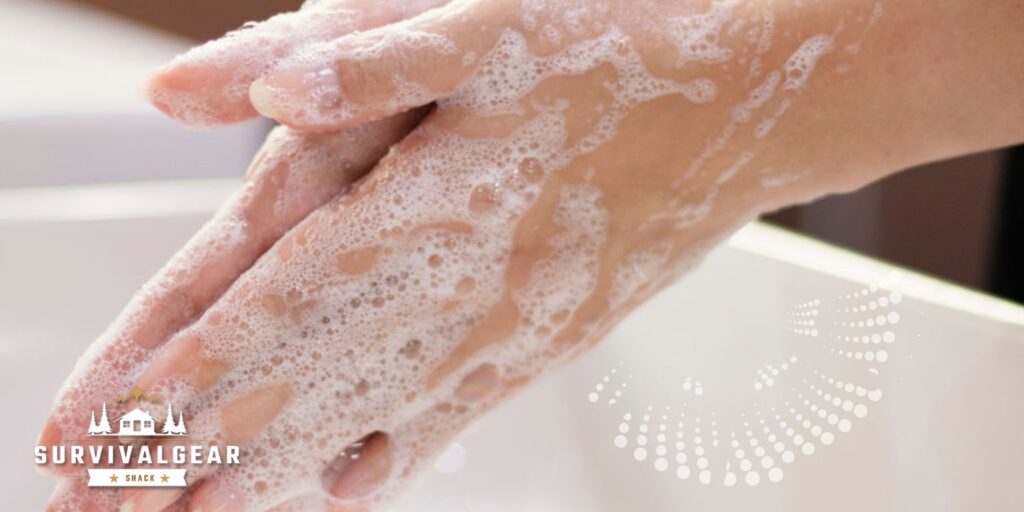
For black powder, vigorously washing the residue with water already works well. Of course, adding soap helps in smoothly removing the residue. One of the best soaps to trust in safely cleaning your hands is the Lava Soap; it can clean pretty much everything you get into your hands aside from gunshot residue, and it includes grime, grease, oil, and many more. At the same time, the soap also works on moisturizing the hands.
On the other hand, it is best to use a bit of solvent when cleaning smokeless powder residue since it works better than water. Besides washing hands to clean the gunshot residue, showering is ideal for getting most of the traces of the residue on the body. After all, taking action to prevent the quick transfer of residue is needed not to create risk so going to an extent is never too much, right?
Meanwhile, gunfire residue on clothes and shoes is different. First, they don’t have natural oils that only a person has. That’s why nothing can help them clean the residue by just water and soap. Basically, it is much more challenging to remove gunfire residue on clothes, especially cotton fabrics, in one-single washing.
Now that the cleaning gunshot residue question is already answered, let’s now dive into knowing some best tips to maintain hygiene safety while enjoying your trip at the shooting range.
4 Ways to Ensure Hygiene Safety
Who says that your love for shooting will surely harm others with the chemical compounds involving guns? Well, you can surely prevent that from happening by practicing some basic yet highly effective hygiene safety tips. Fortunately, you don’t have to learn that by needing personal research because they are already available below. So, without further ado, see them below:
1. Before doing anything, wash your hands after you’re done shooting.
You can’t deny having gunfire residue on your hands and other body parts as you are done shooting. With that being said, it is most reasonable not to do or touch anything. In fact, it is even recommended not to touch even your pocket to prevent the spread of the residue. Of course, you are only getting yourself into health troubles by not washing your hands and already eating. Surely, you don’t want to spread harmful particles in your mouth, right?
Even though washing your hands with water and soap might seem basic, there’s no doubt how this hygiene safety practice can help you secure your and others’ safety from gunshot harm. Despite the fact that it is not harmless, you can minimize any adverse consequences from the residue by strictly practicing washing your hands after shooting.
2. Immediately wash up after you are done with your shooting session.
In connection to washing hands, washing up after you’re done shooting is also a great hygiene safety practice to eliminate more traces of residue on the body. It is an excellent way not to spread the residue, especially if you have kids at home. Of course, you also need to change clothes and secure your shooting range clothes to not mix with other clothes and things. You also need to wash them strictly with water and soaps. By that, you can effectively minimize exposure to risky chemical compounds.
3. Don’t wash shooting range clothing with the rest of the ordinary clothes on laundry.
Since your shooting range clothes are also exposed to gunshot residue. That’s why proper caution is needed when managing them. As mentioned above, shooting range clothes, primarily cotton fabrics, are highly challenging to clean with only a single washing. With that being said, there is a high possibility of secondary transfer of the chemical compounds. Certainly, you don’t wash your shooting range clothes with your ordinary clothes to avoid any transfer of residue. Otherwise, the result will surely scream danger in the future.
4. Wear disposable gloves when cleaning your gun.
Admittedly, there’s also a hygiene safety practice for gun cleaning. Since your gun also accumulated gunshot residue. By that, you need to clean it with the most suitable gun cleaning tools to keep your gun working on its top shape performance and will work safely. For gun cleaning, it is helpful to wear disposable gloves. That way, you can prevent the residue and gun cleaning solvents from getting on your skin.
Can Gunshot Residue Be Detected Even After Washing?
Since gunshot residue can be washed off using water and soap, or solvent, you might wonder if it can still be detected after washing it. Unfortunately, there are still some detectable and traceable remnants following the cleaning of residue. It means that washing won’t completely eliminate the residue. Nevertheless, washing effectiveness is high as it minimizes exposure to gunshot residue.
Moreover, gunshot residues are detected since they are not entirely removed by regular cleaning and washing because of the characteristics of their chemical compounds. Of course, it is challenging to detect the residue using naked eyes.
Even though washing still leaves traces of residue, it is still highly recommended to practice hygiene safety after you’re done shooting to have less exposure to chemical compounds in them. By that, you can extremely prevent developing health complications a few years ahead of you.
Importance of Shooting Accessories, Plus 6 Best Shooting accessories
Aside from knowing to clean gunshot residue, your gun also needs your attention. It is already stated above that your gun can also accumulate residues that can decrease its accuracy and performance. For that reason, shooting accessories are necessarily important. After all, guns are pricey, and you don’t want them to become useless only because of residue, right? Therefore, you need to own the best shooting accessories that suit your gun cleaning and maintenance needs. But, what exactly are shooting accessories? Here are some of them:
Gun cleaning kits
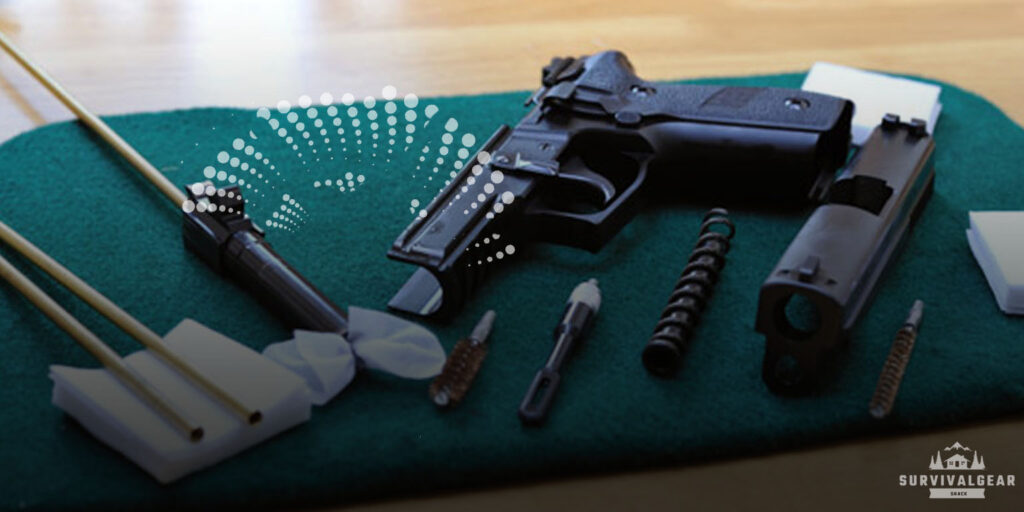
First on the list is the gun cleaning kits. These shooting accessories feature different and essential cleaning supplies in one set. They are often on the go so that gun owners can bring them outdoors for more accessible gun cleaning. In addition, the kits feature different sizes of cleaning tools. Hence, gun owners must choose the calibers they need for effective compatibility. Some essential tools inside a gun cleaning kit are rods, brushes, patches, and many more. Want to find the best cleaning kits? Check the link below.
Gun cleaning solvents
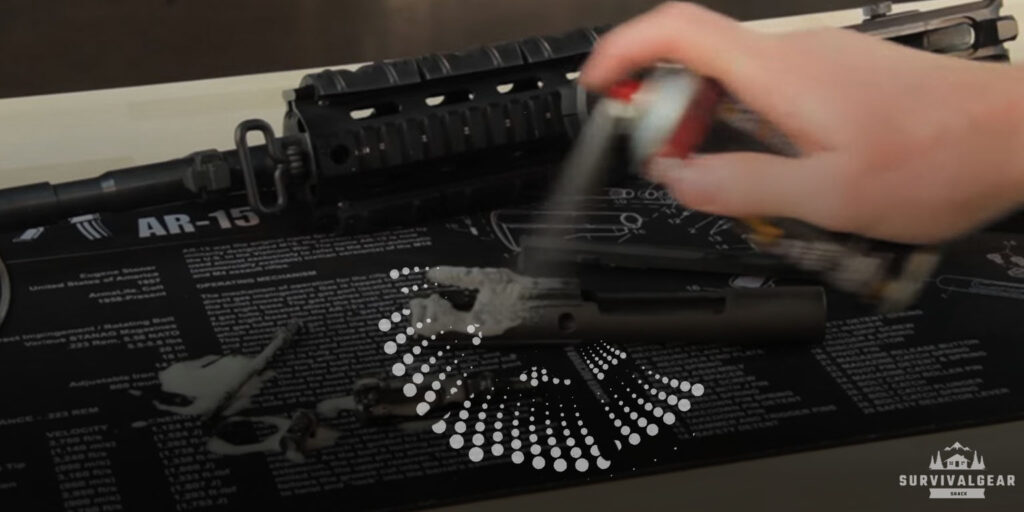
More often, gun cleaning solvents are not included in gun cleaning kits since some prioritize sets of cleaning tools. In addition, they are suited in dealing with residue and fouling in the gun’s interior and sensitive parts that are vulnerable for gun cleaning brushes. Through their deep penetration, gun cleaning solvents will leave no harmful contaminants on your gun. See the link below for a guide to the best gun cleaning solvents.
Gun vise
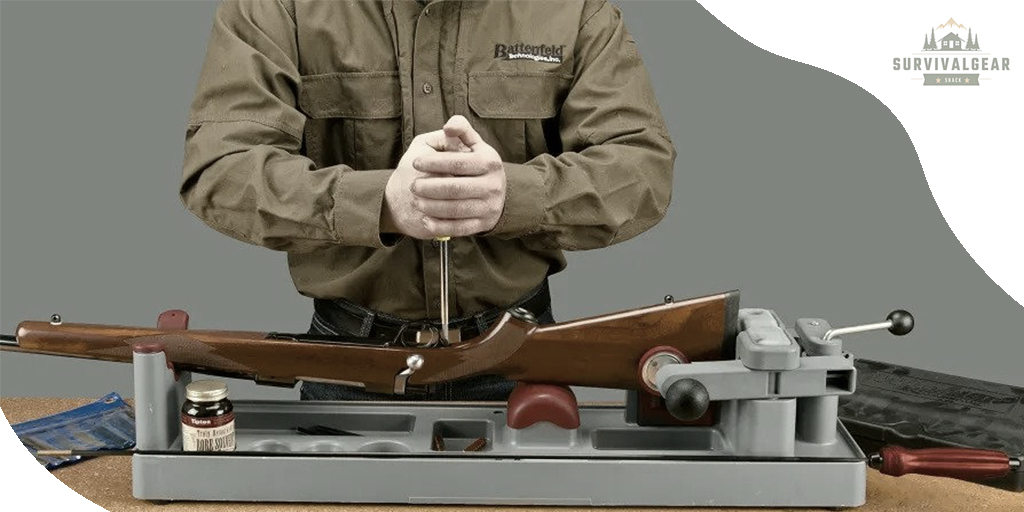
Who says that you need to suffer and be uncomfortable with gun cleaning? Surely, it is not the gun vise because it can help you free both hands since it safely accommodates your gun with its steady platform. Spark changes with your gun cleaning experience with the gun vise.
Gun cleaning mat
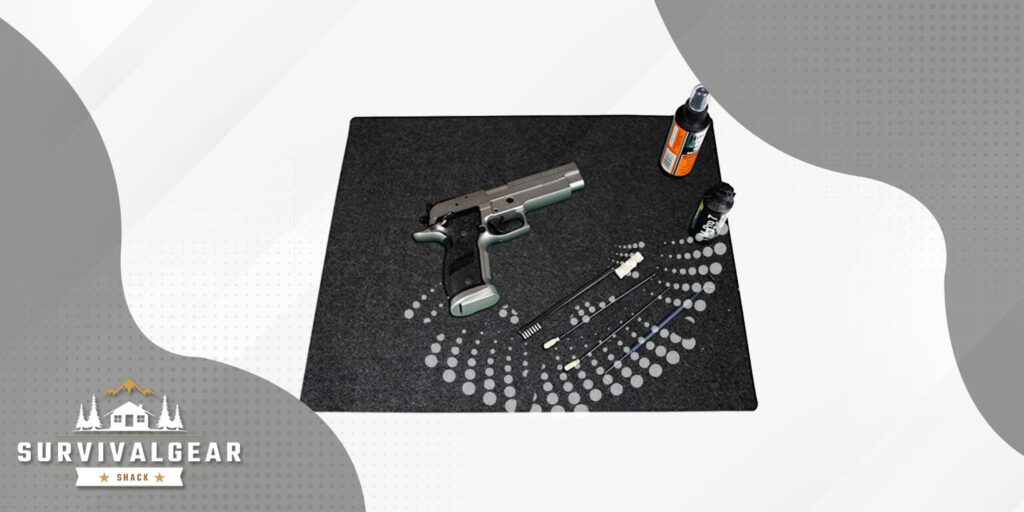
Gun cleaning with solvents can frustrate you with the mess. In addition, some gun cleaning solvents can threaten vulnerable surfaces with damage effects. For that reason, you need a gun cleaning mat to keep your gun cleaning station cleaner with less mess to work with. Luckily, you don’t need to find gun cleaning mats everywhere; just check the link below.
Gun cleaning table
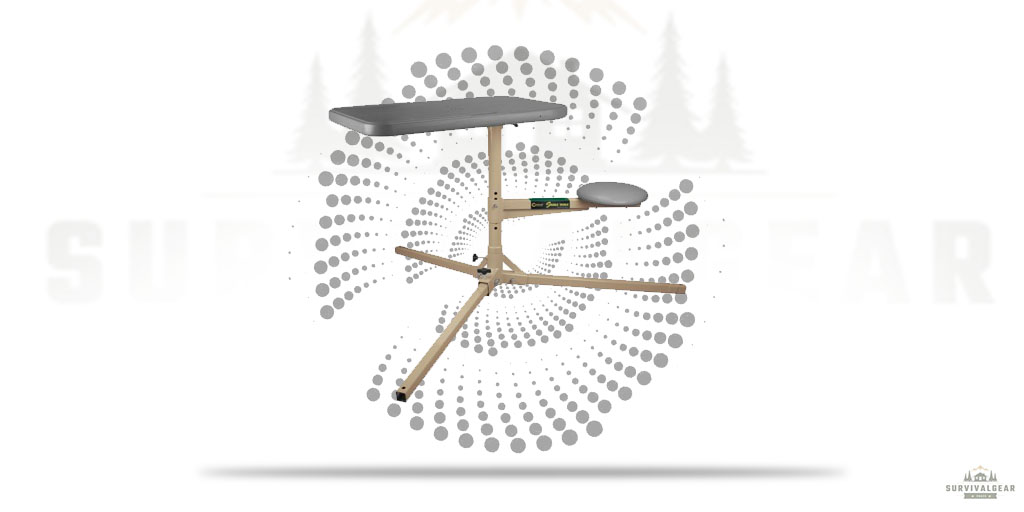
Truly, it might be challenging to clean your gun outdoors. A gun cleaning table is one of the best shooting accessories you can rely on to provide you with comfortability and convenience. Learn about it more by checking the guide.
Gunsmith tool kit
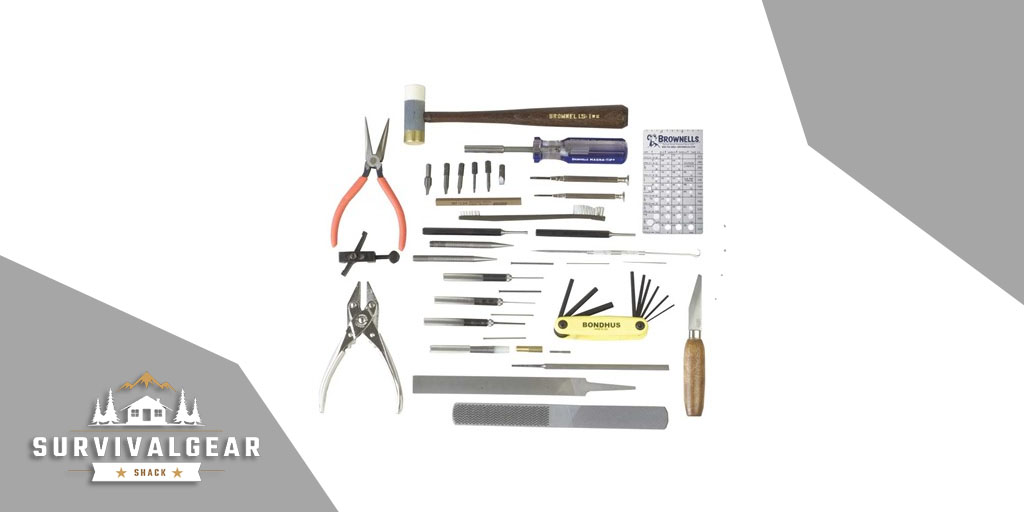
Doubtless, you also need to have a gunsmith tool kit that allows you to repair, modify, and improve your gun for overall gun care and maintenance. In addition, gunsmithing is a highly rewarding and fun task that keeps you entertained as gun enthusiasts. Discover what comprises a gunsmith tool kit by checking out the guide through the link below.
Final Thoughts
Conclusively, at first, you won’t detect a gunshot residue with your eyes. It is not visible to the eyes, and only lab analysis can fully detect them. Can gunshot residue be washed off? The answer is yes if it is highly visible and hard for invisible and leftover remnants.
Nonetheless, by cleaning gunshot residue right after you’re done shooting, you are helping yourself, and everyone prevents health difficulties further down the line as you minimize exposure to gun and residue chemical compounds by washing, showering, and cleaning your clothes after your shooting range trip. Thus, never underestimate the effectiveness of hygiene safety and keep on practicing it.
Frequently Asked Questions
Discussing gunshot residue might spark many questions on your head. After all, it is fundamental to know about it since it is a way to maintain gun safety. Thankfully, you don’t have to search on your own, as you can learn from the frequently asked questions about bullets, guns, and cleaning gunshot residue are listed here. Discover them below.
Should I wash my clothes after shooting at the range?
Truly, there are stern reminders about hygiene safety after shooting. In general, gun owners are highly discouraged from eating, smoking, and drinking without washing after shooting. Basically, you must not do anything without washing up afterward. Knowing about the existence of gunpowder residue, some gun owners even prefer to take a shower to wash their hair. They shower right after their visit at the shooting range.
Of course, clothes are no exception to the hygiene safety rules. More often, gun owners prefer to wash their clothes separately. Aside from your body and gun, your clothes have more gunshot residue than other things near you. Thus, if you don’t want to spread any residue, you must also wash your clothes after visiting a shooting range. After all, if you want to be careful, you need to include washing your shooting clothes.
What three elements are most commonly found in gunshot residue (GSR) particles?
In general, the three primary elements that you can commonly find in GSR include antimony, lead, and barium. Cleaning gunshot residue is highly recommended as different particles are a threat when left for a long time. For instance, antimony can cause frustrating irritation of the skin and eyes. Meanwhile, exposure to lead can cause weakness and anemia. On the other hand, barium can highly push a person to experience breathing difficulties.
Do guns smell after being fired?
As guns also accumulate a build-up of gunshot residue, it is not surprising that guns have a smell. More often, they smell like burnt gunpowder and other main constituents and smell like charcoal and sulfur.
How hard is it to remove gunshot residue?
Since gunshot residue contains some chemical compounds that are not harmless, it is highly necessary to remove it by washing it off using water and soap. Some gun owners extend their hygiene safety by showering and changing their entire clothes. Of course, before washing off the gunshot residue, you must not touch anything because the residue consists of flour consistency that makes it highly transferable.
Does gunpowder come out of clothes?
Truly, gunpowder is among the hard stains that are surely too tough to come out of clothes. Unfortunately, the gunpowder remains intact to the clothes, even with vigorous washing.
What takes gunpowder off your hands?
One of the best ways to take gunpowder off your hands is vigorous washing. Adding soap can also make the cleaning more effective. Most gun owners trust that Lava Soap can efficiently reduce the gunpowder in the hands by almost 95%, leaving only a tiny amount in the hands. For less exposure to gunpowder, always wear shooting gloves and disposable gloves for cleaning guns.
Do modern bullets use gunpowder?
Modern ammunition highly utilizes smokeless gun powder as the propellant. Meanwhile, traditional gunpowder is composed of different components, such as potassium nitrate, charcoal, and sulfur. Modern guns use firing pins to strike the primer that effectively leads to a reaction within the cartridge.
What does a gunshot smell like?
One thing is for sure with the gunshot smell; it does not have a fragrant smell that you will like. At first, you might not be used to the smell, but it will be bearable if you are truly a gun enthusiast. When you fire your gun, you will notice a produced cloud of smoke composed of sulfur dioxide and other gasses. In comparison, a gunshot smells distinctly like the faint smell of rotten eggs. As they do not have a nice smell, cleaning gunshot residue is highly recommended.

